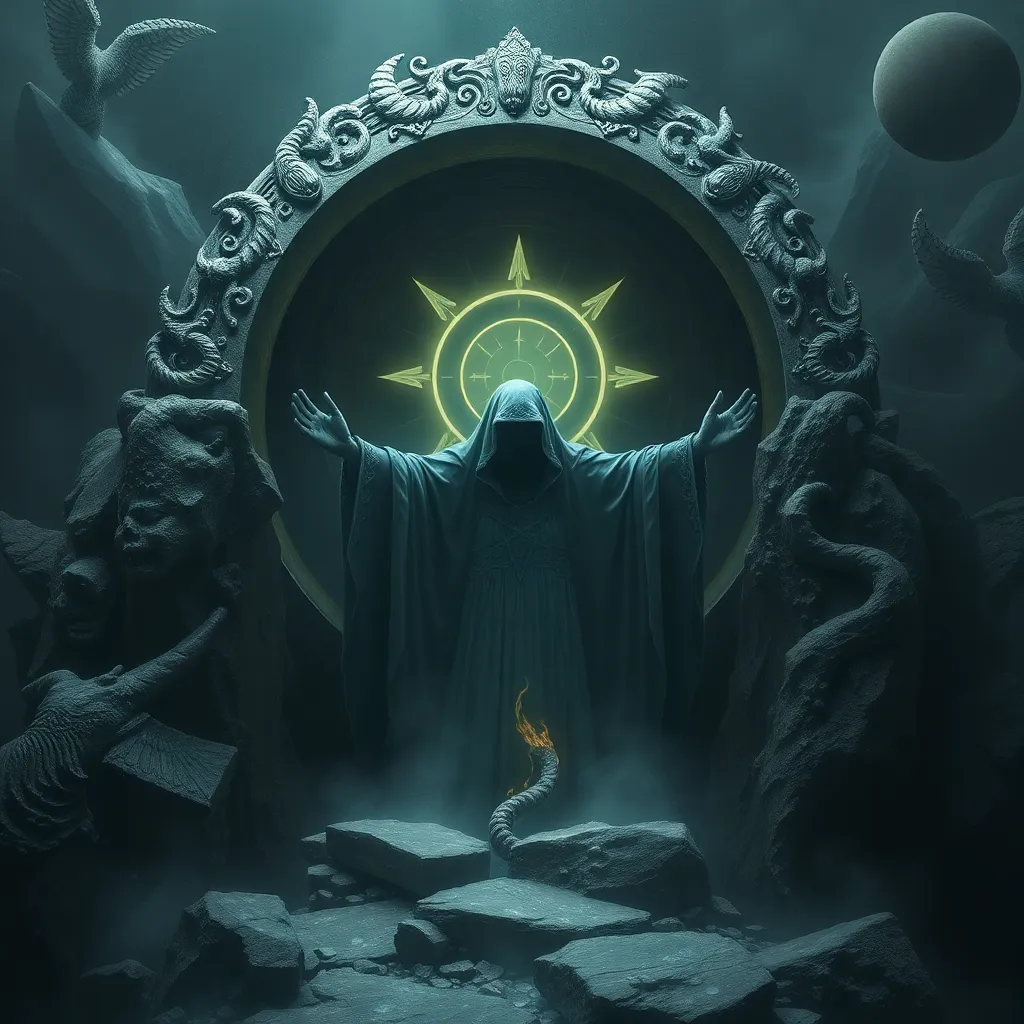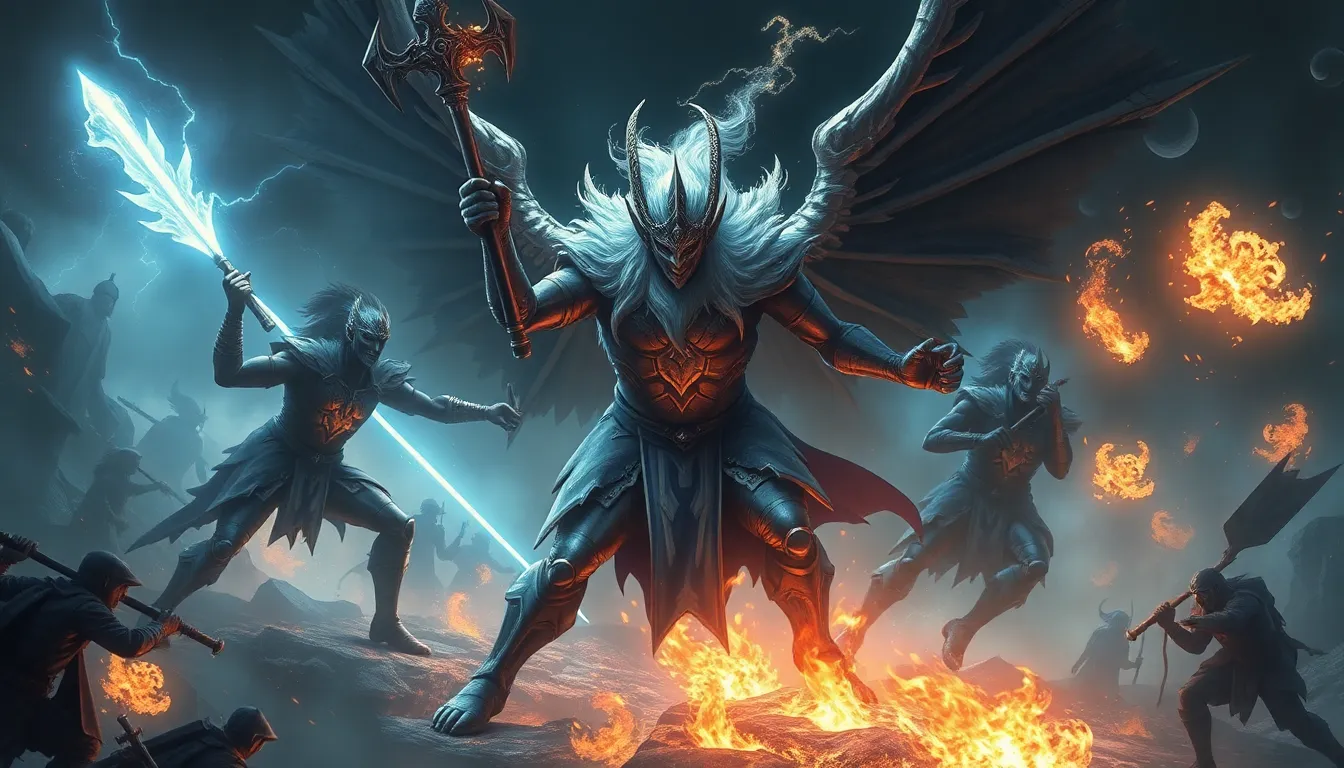The Sea Serpent and the World: Jörmungandr’s Echoes in Celtic and Germanic Myth
I. Introduction
In the rich tapestry of Norse mythology, Jörmungandr, also known as the Midgard Serpent, stands out as a formidable entity. This colossal sea serpent, encircling the world, symbolizes the chaos that underlies the cosmos. Sea serpents, in general, hold significant places in the mythologies of various ancient cultures, representing both danger and the unknown. This article aims to explore Jörmungandr’s influence and parallels in Celtic and Germanic myths, illuminating how these cultures interpreted the fearsome and enigmatic nature of sea serpents.
II. Jörmungandr: The World Serpent
Jörmungandr is often depicted as a vast serpent, so large that it can encircle the Earth and grasp its own tail. This imagery evokes the ancient symbol of the Ouroboros, representing eternity and the cyclical nature of existence.
In Norse mythology, Jörmungandr plays a crucial role in the prophecy of Ragnarok, the end of the world. It is foretold that Jörmungandr will rise from the depths of the ocean to engage in a cataclysmic battle with Thor, the god of thunder. Their confrontation signifies the struggle between order and chaos, a central theme in many mythological narratives.
Symbolically, the serpent represents the primordial chaos that exists in the cosmos, embodying the forces of nature that can both create and destroy. The image of Jörmungandr reminds us of the delicate balance between these opposing forces.
III. Celtic Sea Serpent Legends
Celtic mythology is rich with tales of various sea creatures, often embodying the mysteries of the ocean. Sea serpents, in particular, feature prominently in these legends, serving as guardians of the waters and symbols of the unknown.
Among the notable figures in Celtic mythology is the Serpent of Lough Neagh, which is said to dwell in Ireland’s largest lake. This serpent is often associated with local flooding and storms, representing the unpredictable nature of water.
- The Serpent of Lough Neagh: This tale emphasizes the serpent’s connection to the water and its role in local lore and the landscape.
- The Water Horse (Each-Uisge): A shapeshifting creature, the Each-Uisge lures travelers to watery graves, embodying the dangers lurking beneath the surface.
When comparing Celtic and Norse serpent symbolism, one can see both cultures share a common reverence for the sea and its creatures. While Jörmungandr embodies a more cosmic role, Celtic serpents often represent local fears and the unpredictability of nature.
IV. Germanic Mythology and Sea Creatures
Germanic mythology, closely related to Norse traditions, also features a variety of sea monsters and serpents. These creatures often symbolize chaos and the dangers of the unknown.
One of the notable serpents in Germanic lore is Níðhöggr, a dragon that gnaws at the roots of Yggdrasil, the World Tree. Níðhöggr’s actions symbolize decay and destruction, representing the darker aspects of existence.
- The tale of the Níðhöggr: This dragon is often associated with the underworld and the cycles of death and rebirth.
- The dragon Fafnir: Originally a dwarf, Fafnir transforms into a dragon, hoarding treasure and representing greed. His connection to water is significant, as he often dwells near rivers and lakes.
These myths reflect the cultural significance of sea creatures in Germanic society, illustrating their fears and values regarding nature and existence.
V. Cross-Cultural Connections and Influences
Despite the geographical and cultural differences, similarities in serpent mythology can be found across Celtic, Germanic, and Norse traditions. These commonalities suggest a shared understanding of the sea’s power and the dangers it holds.
Trade and migration throughout history facilitated the exchange of myths and stories. As peoples interacted, they adapted and integrated each other’s legends, leading to a rich tapestry of aquatic lore.
Oral tradition played a crucial role in preserving these narratives, allowing tales of sea serpents to be passed down through generations, evolving with each retelling while maintaining core themes of chaos, danger, and the unknown.
VI. Jörmungandr’s Legacy in Modern Culture
In contemporary literature and media, Jörmungandr continues to resonate, appearing in novels, films, and video games. This resurgence of interest in ancient myths speaks to a broader cultural fascination with the archetypal themes embodied by Jörmungandr and other sea serpents.
Modern symbolic interpretations of Jörmungandr often explore themes of environmentalism, the cyclical nature of life, and the struggle against chaos. These interpretations reflect contemporary societal values and concerns, linking ancient narratives to present-day issues.
VII. Thematic Analysis: Chaos, Order, and the Sea
The myths surrounding sea serpents, including Jörmungandr, often explore the themes of chaos and order. The sea itself serves as a powerful symbol of the unknown, representing both the potential for life and the danger of destruction.
These narratives reflect societal values and fears, illustrating how ancient cultures understood their world. The chaos represented by sea serpents often mirrored the unpredictability of life, while the heroes who confront these creatures symbolize the quest for order and understanding.
VIII. Conclusion
Jörmungandr’s significance in Norse mythology extends beyond its own narrative, echoing through the myths of Celtic and Germanic traditions. The enduring legacy of sea serpent myths illustrates the universal human fascination with the unknown and the chaos that lies beneath the surface of existence.
As we reflect on these ancient narratives, it becomes clear that the stories of sea serpents are not merely relics of the past but continue to hold cultural importance in understanding human fears, values, and the mysteries of the natural world.




